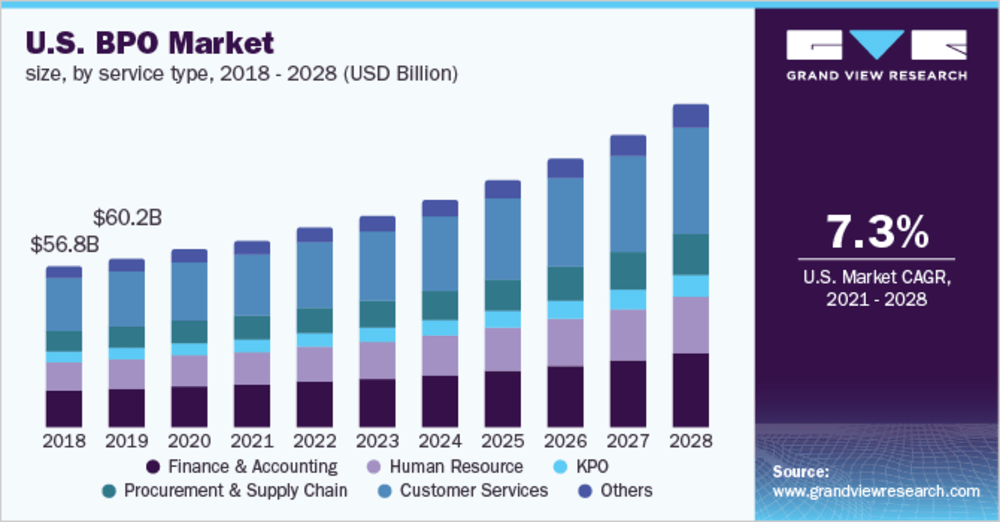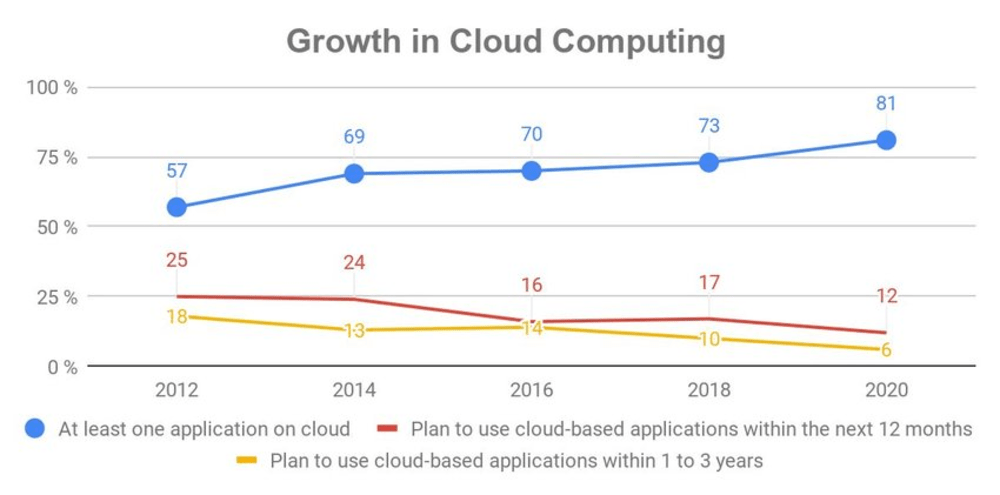Business Process Outsourcing, or BPO for short, is not a new idea. But not all companies know enough about this broad term to choose the best options for their unique features and core competencies.
As a replacement for in-house employees, outsourcing counterparts offer a variety of skills and resources to help their clients with their problems. Companies that want to join the market for shared workloads must understand the different types of Business Process Outsourcing and how they work.
What Is Business Process Outsourcing (BPO)?

Business Process Outsourcing, or BPO, is the act of giving some business tasks and responsibilities to outside vendors. Business Process Outsourcing services now come in five different types, which are based on two very important factors:
- Types of assigned tasks: Front-office Business Process Outsourcing and Back-office Business Process Outsourcing
- Location of providers: Offshore Business Process Outsourcing, Nearshore Business Process Outsourcing, and Onshore Business Process Outsourcing
Characteristics 5 Types of Business Process Outsourcing
1. Front-Office Business Process Outsourcing
Front-office Business Process Outsourcing is what a company will choose if it wants to outsource tasks focusing on the customer. So, the company can take advantage of highly qualified workers for customer service, making software, selling, and marketing.
By outsourcing these jobs, the company can spend more time and money on its core roles instead of hiring new people and training them.
2. Back-Office Business Process Outsourcing
People who work in the back office aren’t in charge of tasks that involve clients. Instead, they focus on IT services, accounting, human resources, business process automation, payment, quality assurance, and other things. Back-office Business Process Outsourcing consists of Knowledge Process Outsourcing (KPO), Legal Process Outsourcing (LPO), and IT-Enabled Services (ITES) Business Process Outsourcing. This is because global outsourcing is becoming more popular.
3. Offshore BPO
Offshore outsourcing means exactly what it says: putting business work in the hands of people in other countries. This type of Business Process Outsourcing gives a company many benefits, such as a wide range of resources, policies that help them save money on taxes, and political stability.
More importantly, the organization can find a pool of talented people and get good services at a lower cost. This could lower the cost of doing business and even the price of goods for end users. A common example of offshore BPO is when a software company in the US hires a team of developers in Vietnam to build an app.
Recommended reading: How Can Outsourcing Developers Help Your Business?
4. Nearshore Business Process Outsourcing
If the US company in this case decides to work with a service provider who is closer to them, this fits into the definition of nearshore Business Process Outsourcing. This choice is made possible by specialized skills, lower costs, and tax benefits.
5. Onshore Business Process Outsourcing
This kind of business process outsourcing happens when the contractor is in the same country as the client. Both businesses can have offices in the same city, or they can move to different cities.
Companies choose onshore (or “domestic”) outsourcing for the same reasons as other Business Process Outsourcing firms: lower prices and a wide range of skills. Onshore Business Process Outsourcing can also be a good choice when the company considers how similar the work is culturally and how often in-person meetings are necessary.
Implementation of Outsourcing Processes for the 5 Business Process Outsourcing Types
There are some important rules it should follow for a successful outsourcing process:
1. Identify the Project’s Scope, Characteristics, and Ultimate Goals
Before rushing to have projects done by someone else, you should think about their features (such as cost-effectiveness, skills, and time) and goals. Most of the time, outsourcing is important for non-strategic but still important tasks that are bigger than what the company can handle.
2. Choose the Right Provider
The next important step is choosing the right provider based on whether the business functions are front-office or back-office and whether they need to be implemented inland or outland. Together, the answers to these questions and the unique needs of the project will help you choose a good contractor. Another important thing is reputation. So, you can ask your friends for suggestions or look for better options on professional websites and in groups.
3. Formulate a Well-Managed Outsourcing Strategy
Contracting work for a business is not like picking a movie to watch. So, the execution of outsourcing processes must be planned in order to make sure everything goes as planned. You can work together with service providers to come up with the best plans for outsourcing.
4. Design Service-Level Agreements (SLAs)
SLAs will tell providers what kinds of services clients need from them, what metrics they should use to measure performance, and so on. They are the ties that hold both parties to their agreements and make sure that everyone wins when the project is over.
5. Develop Effective Communication Channels
Misunderstandings and less work get done because of bad communication, especially when business work is done abroad. So, using tools for communication and project management is a good way to make it easier for people to talk to each other.
6. Review the Contractor’s Performance Regularly
The company that is paying the vendor should watch how they work to see if the project is going smoothly. Many outsourcing companies now use agile models and management software so that the client can see how the work is going and give feedback right away. This helps to finish work faster and better.
The Business Process Outsourcing Market
This section will give you a more complete view of the Business Process Outsourcing market, including its size around the world, major trends, benefits, and challenges.
Introduction to Business Process Outsourcing
According to the 2021 report of Grand View Research, global BPO services were valued at US$232.32 billion in 2020. This figure is projected to increase with a compound annual growth rate (CAGR) of 8.5% between 2021 and 2028. This anticipated boom is incentivized by the increasing demand for fostering business agility, reducing operational costs, surviving the tougher competition, and more.
Also, technological advances like SaaS-based solutions, AI, big data analytics, and social media browsing help the business process outsourcing market grow.

In 2020, the customer services sector had more than 31% of the market share for Business Process Outsourcing services. Estimations suggest that it will continue to be the most popular because the number of service centers that offer offline and online technical support is growing.
Along with it, the human resources and banking industries will also grow quickly. The expectation is a natural result of the growing need for personnel functions (like hiring or processing payments) and the stricter rules for banks.
In 2020, companies in IT and telecommunications used outsourcing services like billing administration, accounting, and call centers the most. The segment is growing because there are more and more IT companies and the world is becoming more industrialized quickly.
Recommended reading: What Is Outsourcing? Definitions, Functions, Pros and Cons
Benefits of Business Process Outsourcing
Organizations now use the outsourcing market to accomplish their own goals, which are:
1. Cost Reduction
Deloitte’s 2021 Global Outsourcing Survey indicates that cost reduction is a key economic drive behind a company’s outsourcing decision. The invasion of Covid-19 that poses a global economy to upheavals is among the major impacts here.

No matter how much business leaders talk about flexibility and new technologies, what they really mean is that costs will go up in the end. Here, most of the cost cuts are related to getting new employees started, giving them regular training, managing them, and setting up new technologies or processes.
Even inefficient management and amateur work can lead to big mistakes. Business Process Outsourcing firms can help companies avoid these costs because of these reasons.
2. Focus on Core Functions
When experts handle several business tasks, companies may be able to focus more on their core competencies. This action gives them a better competitive edge in a world that is changing quickly and gets them more involved in the value chain. So, they can boost overall business growth and make sure end users are happy.
3. Better Performance in Non-core Missions
Outsourcing companies will help a company improve its overall productivity in non-core tasks by giving it high-quality deliverables, cutting-edge technologies, and custom procedures.
4. Increased Global Presence
Giving business work to agencies in other countries is a good way to find new niches in other countries. For example, AT&T, a company that specializes in phone services, sends most of its call center jobs to countries like Mexico and India to improve its international image and spread the work load around the headquarters.
5. Increased Efficiency and Speed to the Market
Working with expert teams will change a business in a good way. Business Process Outsourcing vendors help come up with a better business idea by using their specialized skills. So, this helps the company’s capacity, improves accuracy, and saves time when it comes to putting out new products. Also, BPO lets the company respond quickly to changes in the market and risks that come with them.
Key Trends in Business Process Outsourcing
Business Process Outsourcing services have been doing well lately, thanks to some great trends.
1. Robotic Process Automation (RPA)
AI and bots are being used more and more to handle small tasks like data entry and insurance claims. Critics say that this trend will cause more people to lose their jobs, but those tasks will be done automatically, which will cut costs and boost productivity. Also, it’s not true that robots will completely replace people. To be more specific, RPA needs workers with a lot of skills to back up the automation system.
2. Social Media Management
Social networks are becoming an easy way for companies to reach their customers, taking the place of websites and phone calls. So, investing in social media management tools is a good way to get customers’ interests for new products and get real-time feedback.
3. Cloud Computing
One IDG study in 2018 concludes that 77% of respondents had a whole or part of computing infrastructure operating in the cloud. This Business Process Outsourcing service will be widely adopted among enterprises and even SMBs because of their rising focus on enlarging data storage, improving data administration, and saving costs.

4. Remote Working Support
Since the pandemic doesn’t seem to be going away, remote work is likely to continue for a long time. To be productive when working from home and moving a lot of business work to a virtual workplace, you will need to use more advanced technologies and communicate in more ways. This trend will have a huge effect on how the Business Process Outsourcing industry is growing.
Challenges of BPO
Inevitably, companies will encounter many drawbacks when they opt to delegate some responsibility to service providers:
1. Security Violation
When companies hire outside groups, their biggest worries are about leaks of private information and privacy breaches. Even though many Business Process Outsourcing services are reliable and legal, data may be at risk, especially if the providers are based abroad and don’t follow certain security rules. Not to mention that many projects are now done with the help of technology and online portals. Critical data could be hacked through security holes that no one knows about.
2. Unprecedented Costs
If you don’t figure out how much an outside team will cost, your bills can grow at a very fast rate. Companies should think about hidden costs like maintenance and upgrades, layoffs, falling productivity, and contract renegotiations, in addition to necessary costs. Also, if a company gets services from a foreign country, they should pay attention to changes in the exchange rates.
3. Communication Issues
There could be misunderstandings between stakeholders because of language and cultural barriers. This keeps business processes in check, but it also wastes more time and money and costs more.
4. Overdependence on Third-Party Vendors
A service provider is an important part of the workflow of the company that hires them. Even if the vendor is very skilled, there is no guarantee that they will always work well to get the best results. Even worse, some service providers try to save money by hiring people with less experience, which could hurt the overall quality. So, not being able to control the contractor’s performance well causes a lot of trouble for the company.
Conclusion
In the past few years, startups have also asked for outsourcing services, along with large businesses and small to medium-sized businesses. So, the BPO industry is comprised of different parts to meet their different needs. If you choose the wrong partners, the problems your company is already having will get worse. So, to make an informed decision, you need to know what your business needs and what Business Process Outsourcing forms are available.























